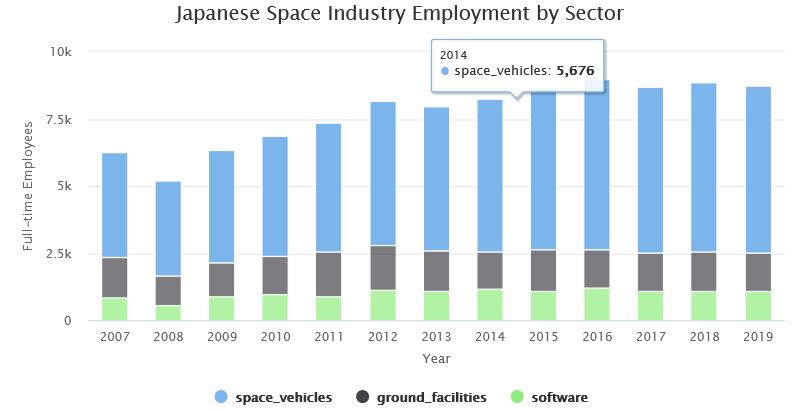2017
Rate of Change in U.S. Government Space Spending, 2011-2020
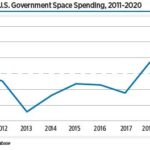
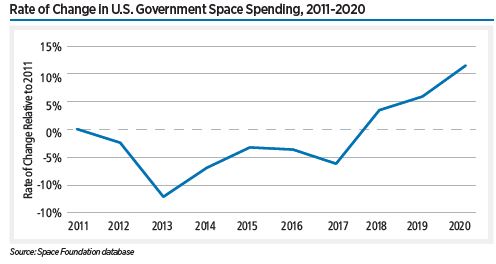
Almost 44% of all U.S. space spending was allocated to NASA in 2020 — over $22.6 billion.184 This figure is a 5.3% increase over 2019 and a 22.8% increase over the preceding decade.
Global Military vs. Civil Government Space Spending, 2011-2020
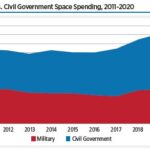
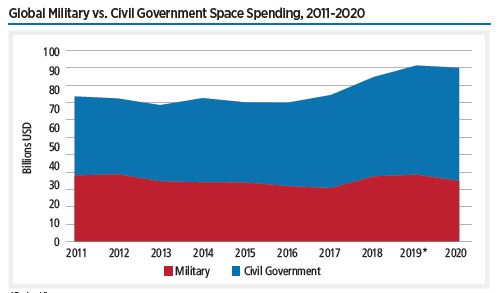
Notably, military space spending in 2020, estimated at US$31.4 billion, constituted the smallest share of global government space spending in a decade – only 35%. This figure marks a reduction from 2019, wherein the $34.6 billion spent globally constituted 38% of government space spending. U.S. military space spending increased by 6.1% in 2020, reaching a new height of $26.6 billion and comprising more than 80% of global military space spending for the first time since 2011.
U.S. Space Industry Core Employment, 2010-2020
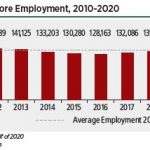
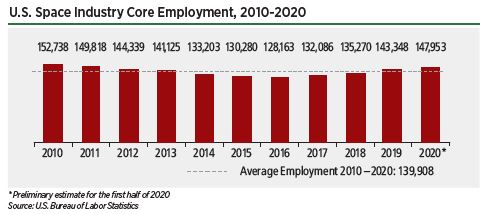
The industry has been growing steadily since 2016, with employment increasing 15.4% over the last four years. These preliminary results suggest that the space industry has been relatively resilient to the effects of the global pandemic.
Rate of Change in Non-U.S. Government Space Spending, 2011-2020
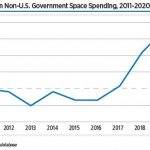
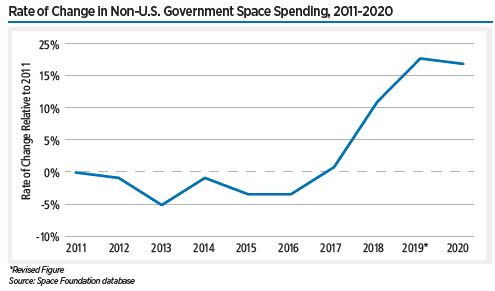
Non-U.S. military space was funded at less than half the level it had been in 2019, according to a country-level analysis of six nations spread across four continents: Argentina, Brazil, France, Germany, Japan, and Nigeria. This drop in investment suggests that, for many countries, military space takes a back seat to civil space ambitions and emergency relief for terrestrial disasters such as the coronavirus for many countries.
Average Payloads Deployed per Successful Orbital Launch (2011-2020)
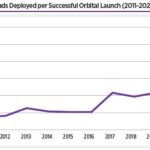
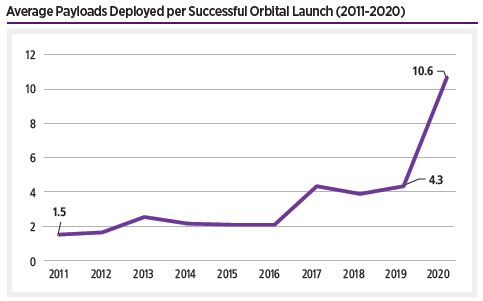
Why might we be seeing this shift towards small vehicles? Average payload deployment per successful launch, a reflection of growing ridesharing among spacecraft operators, reached a height of nearly 11 payloads per launch in 2020. This figure is 2.5 times higher than the previous year and 7 times higher than a decade ago.
Japanese Space Industry Employment by Sector
2019 TSRQ1 – Infrastructure: Spacecraft Overview
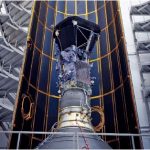
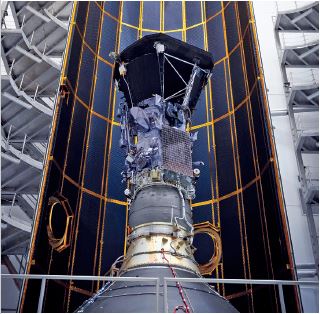
As of March 6, 2019, information was available about 38 nations that deployed and operated 465 spacecraft during 2018. The number of nations operating spacecraft grew 10% from 2017 to 2018, with 75 total nations operating spacecraft. While . . .
2018 – Infrastructure: Space Infrastructure

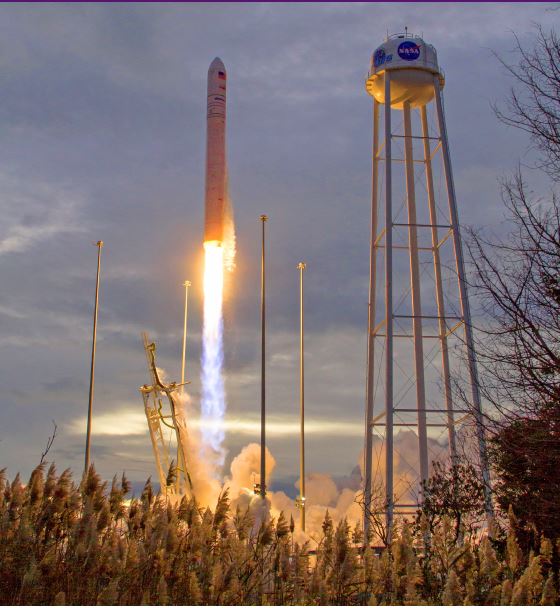
Space infrastructure, like its terrestrial counterpart, is an invisible backbone for services used by people all over the world. Like terrestrial infrastructure, space infrastructure is increasingly relied upon for convenience, services, and . . .
2018 TSRQ1 – Space Products & Innovation

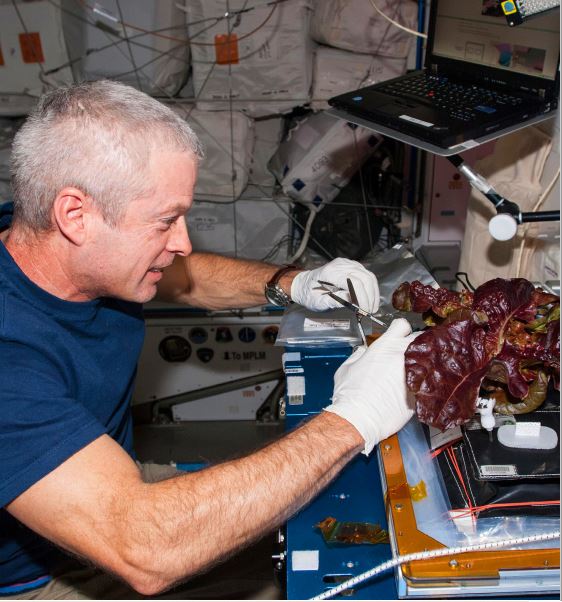
People and businesses continued to harness space technology and services in 2017, sometimes in surprising ways. New companies are using space-acquired data in new ways, aided in no small part by the ubiquity of the smartphone. Blind people can download . . .
2018 – Economy: Space Economy

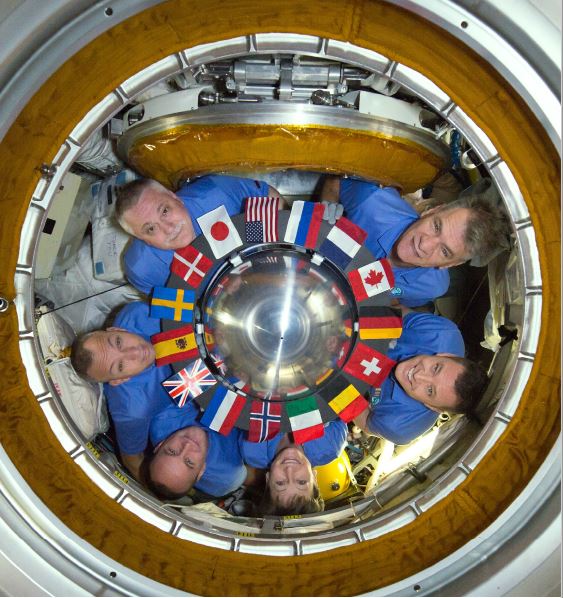
The global space industry grew 7.4% in 2017, reaching a total of $383.5 billion. This continues a broad upward trend that spans more than a decade. Traditional sectors for space commerce have continued to grow and are . . .

